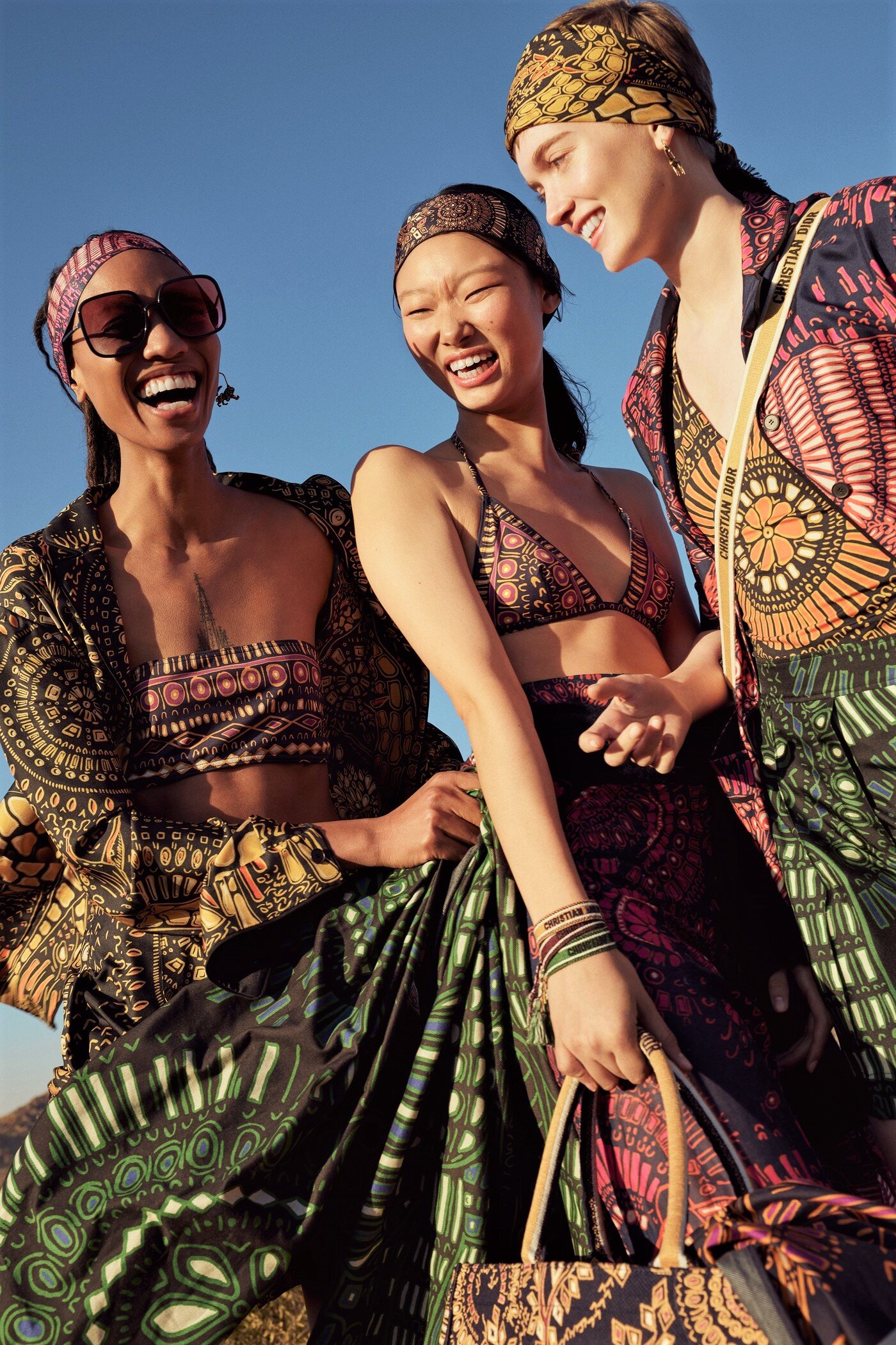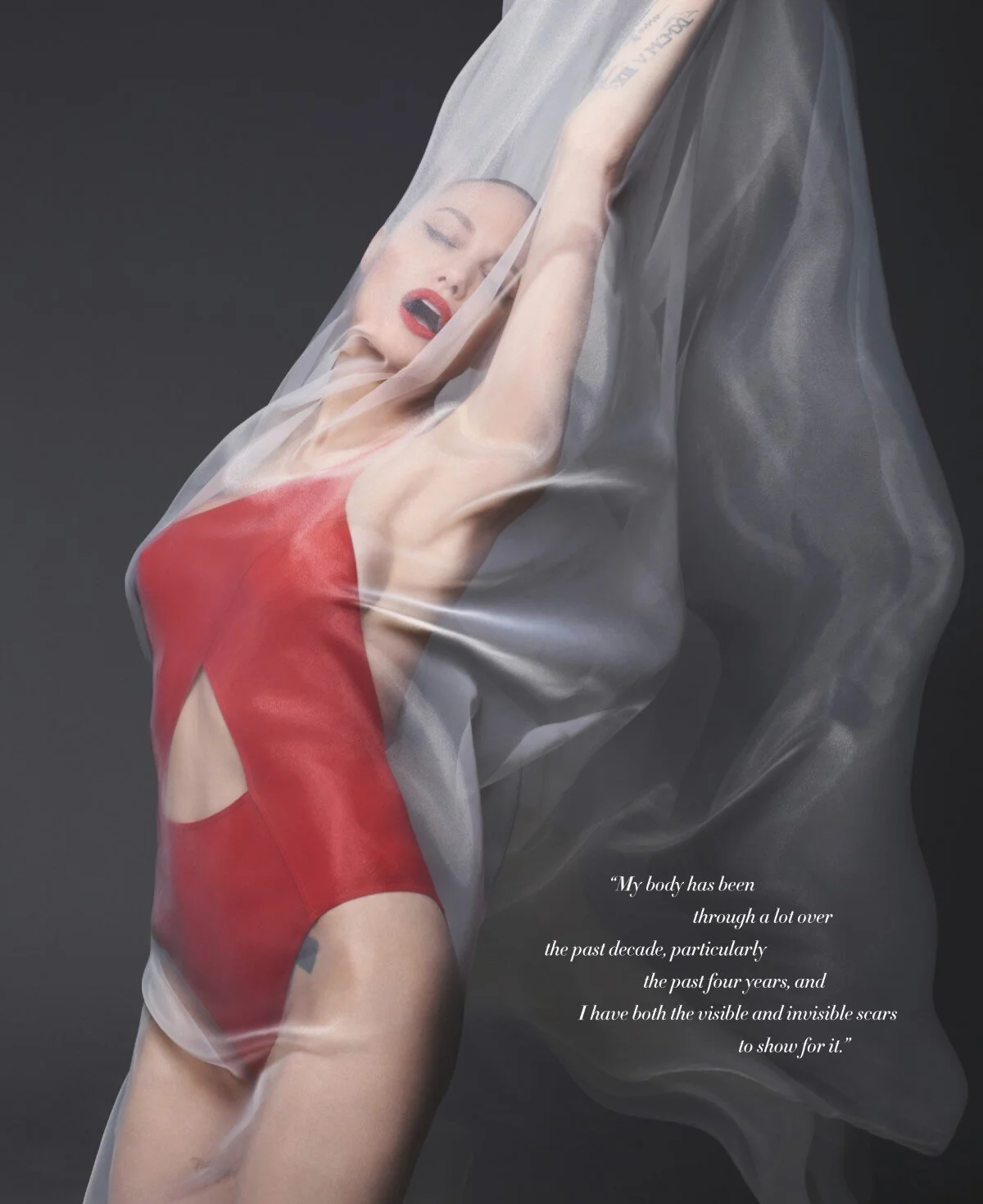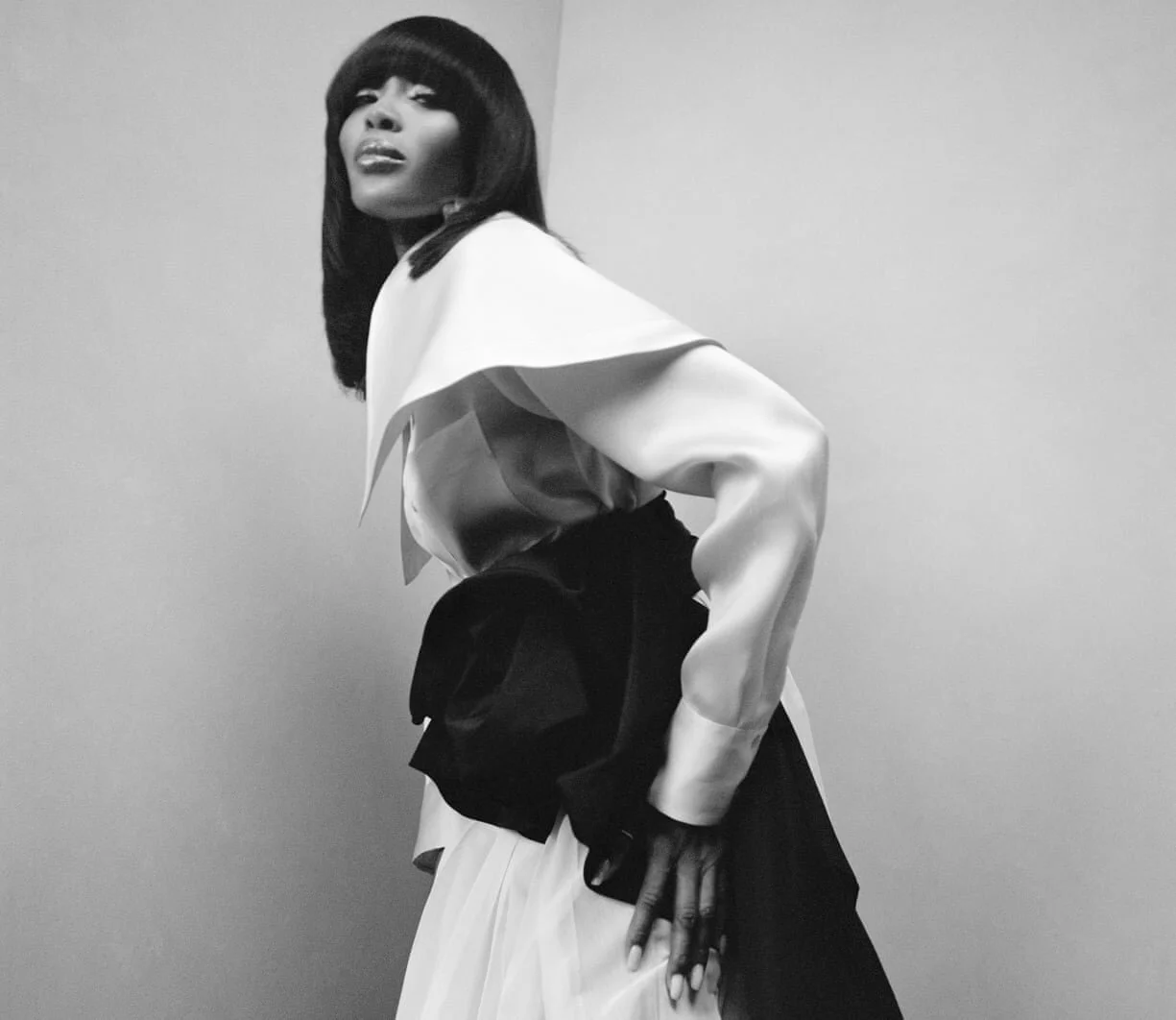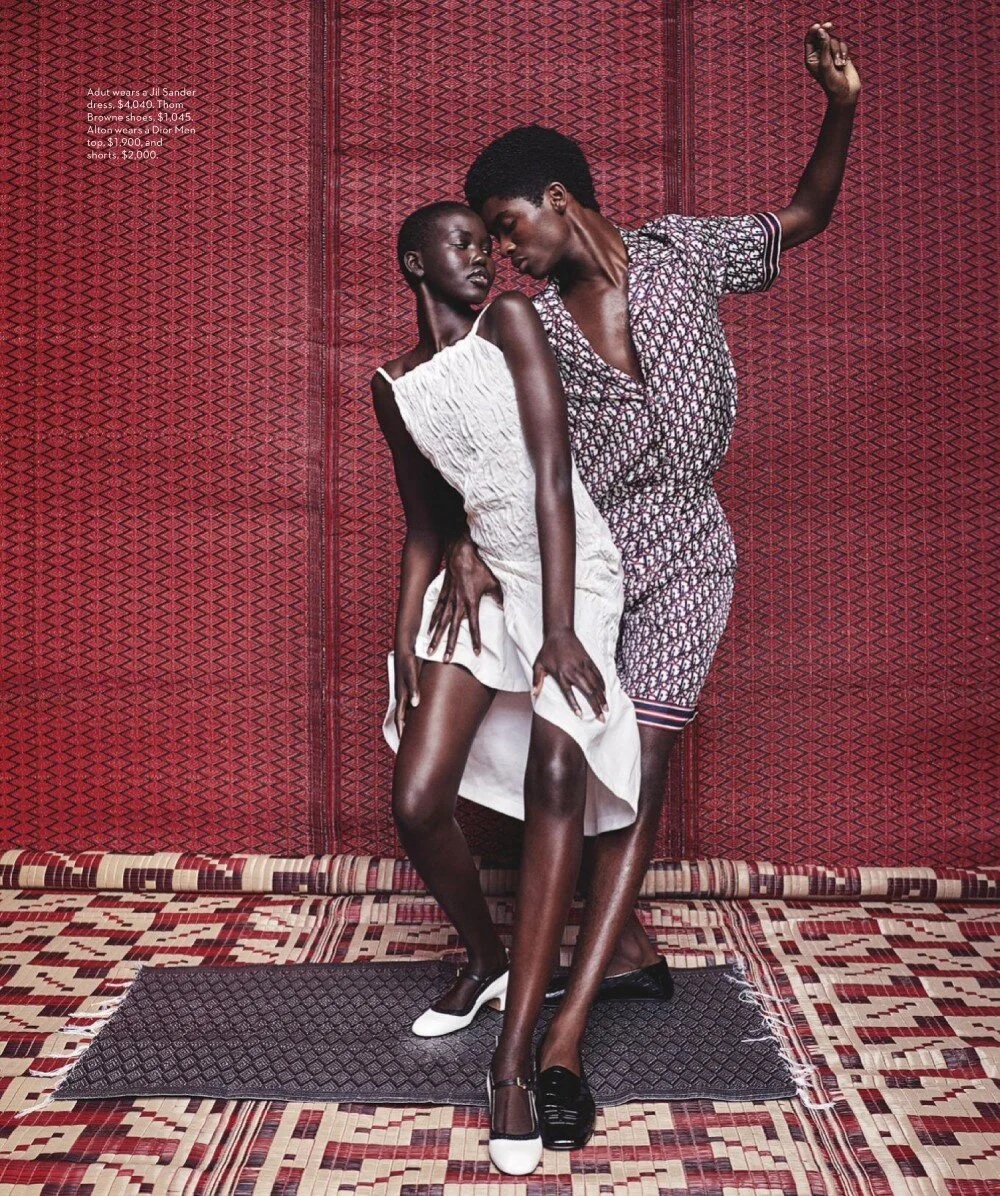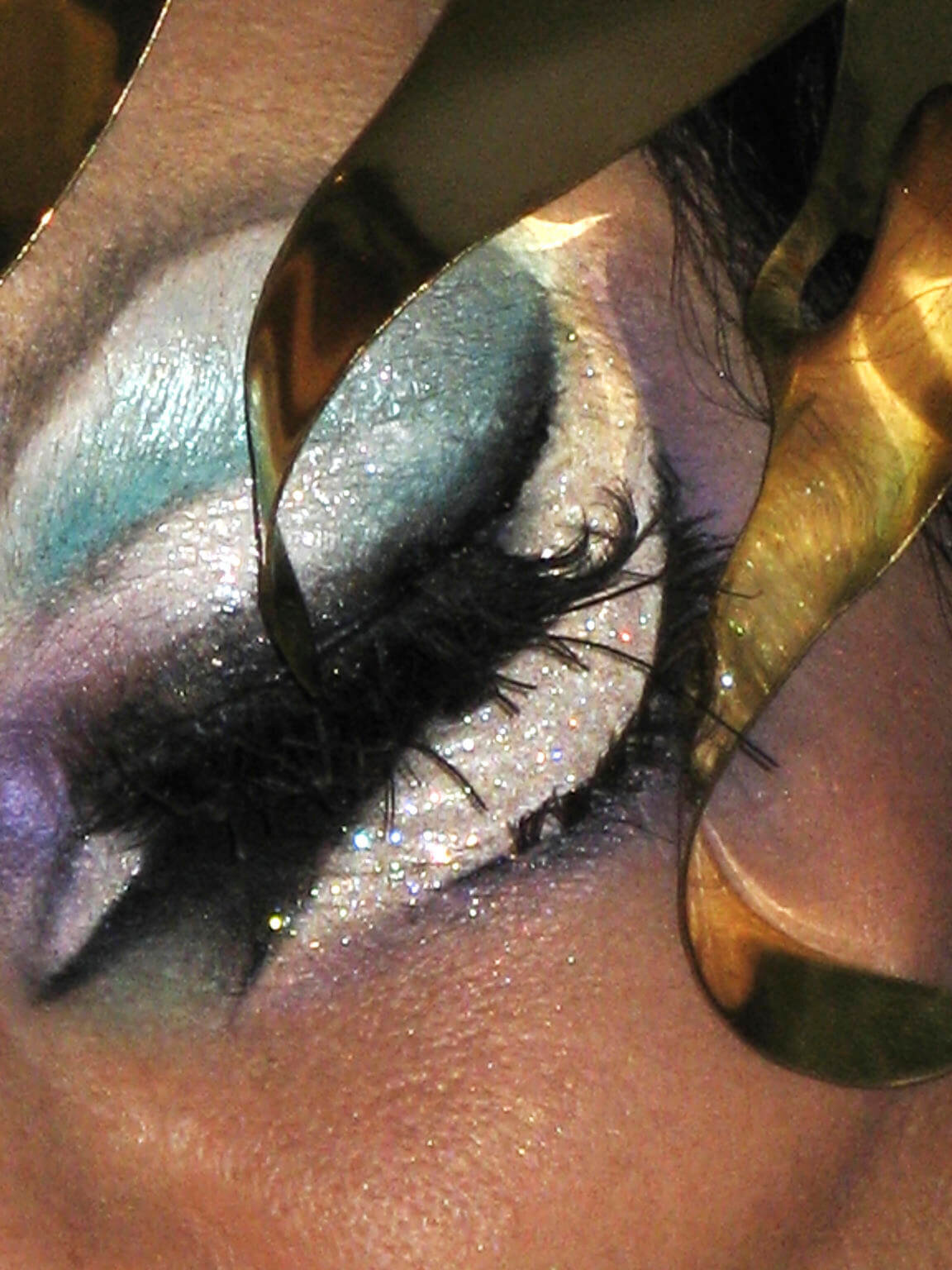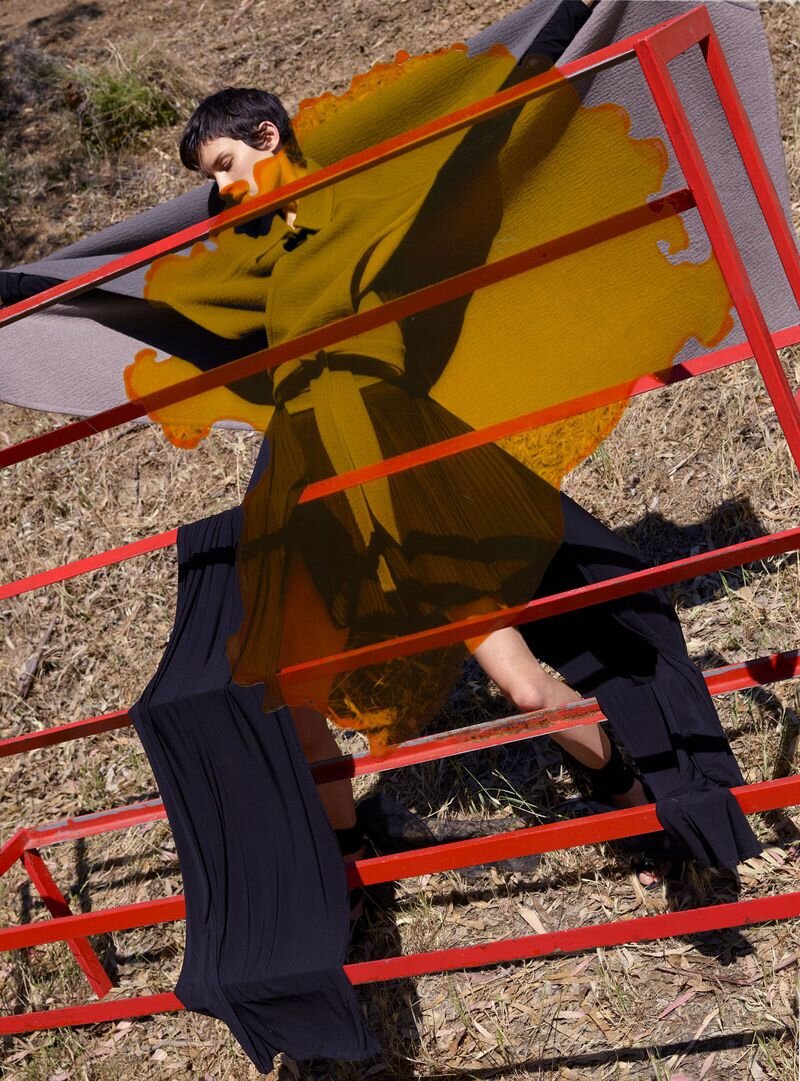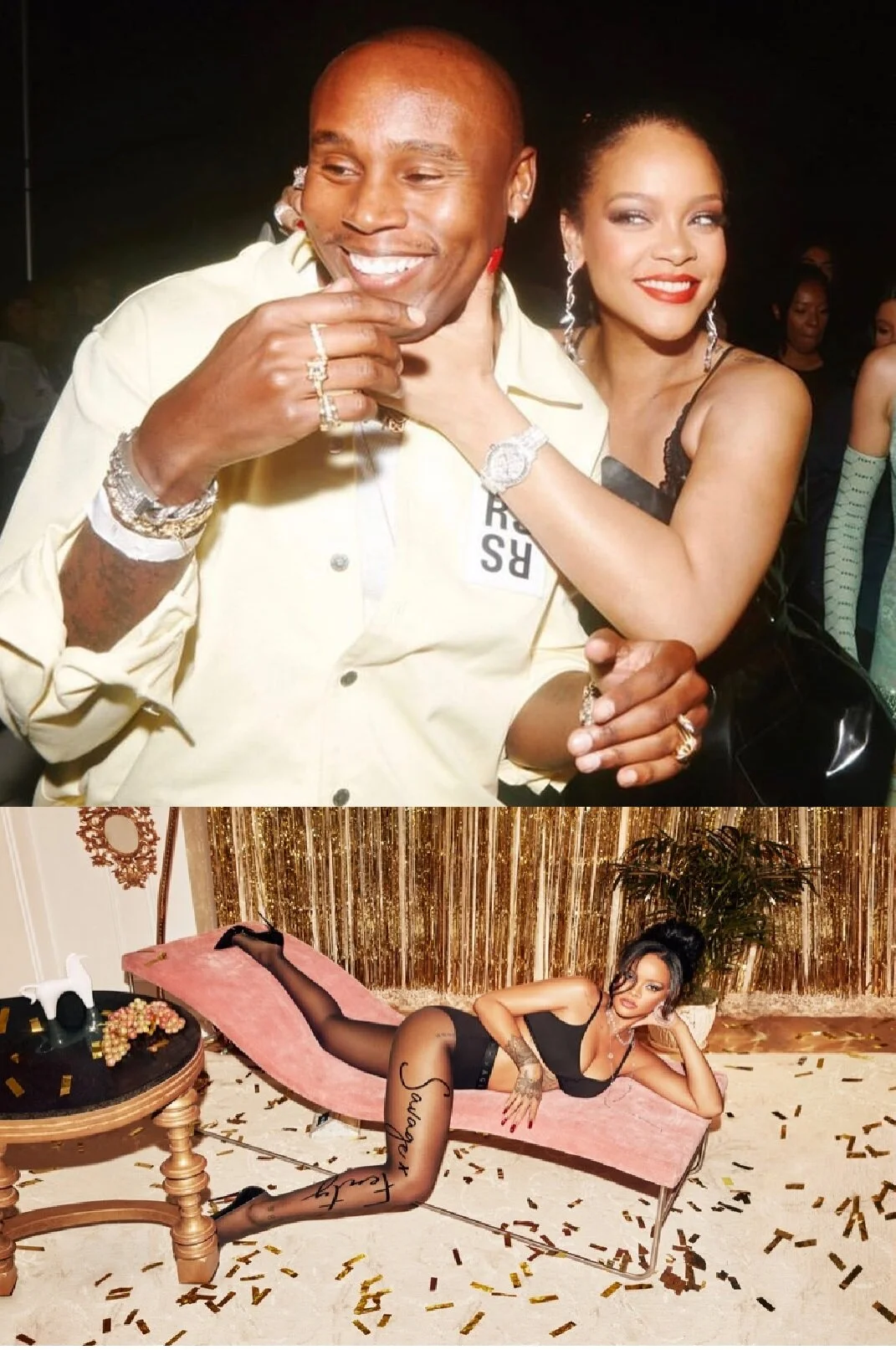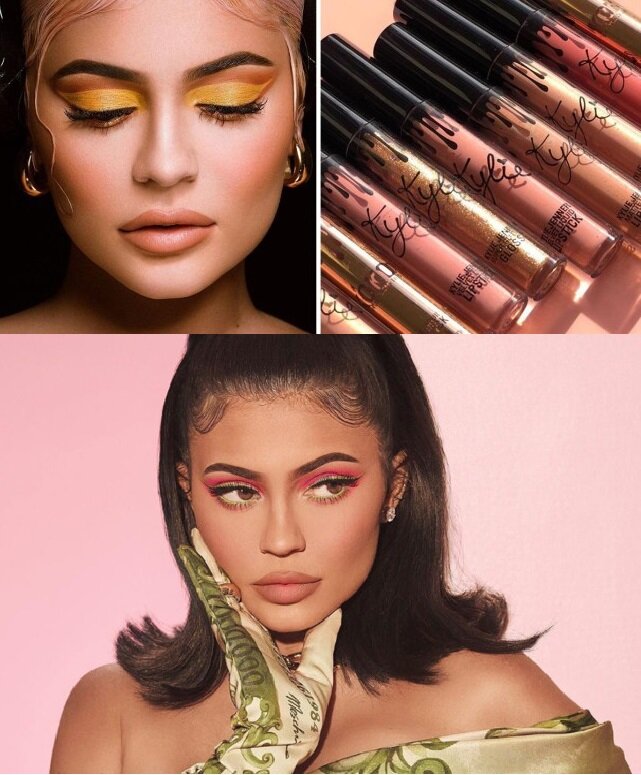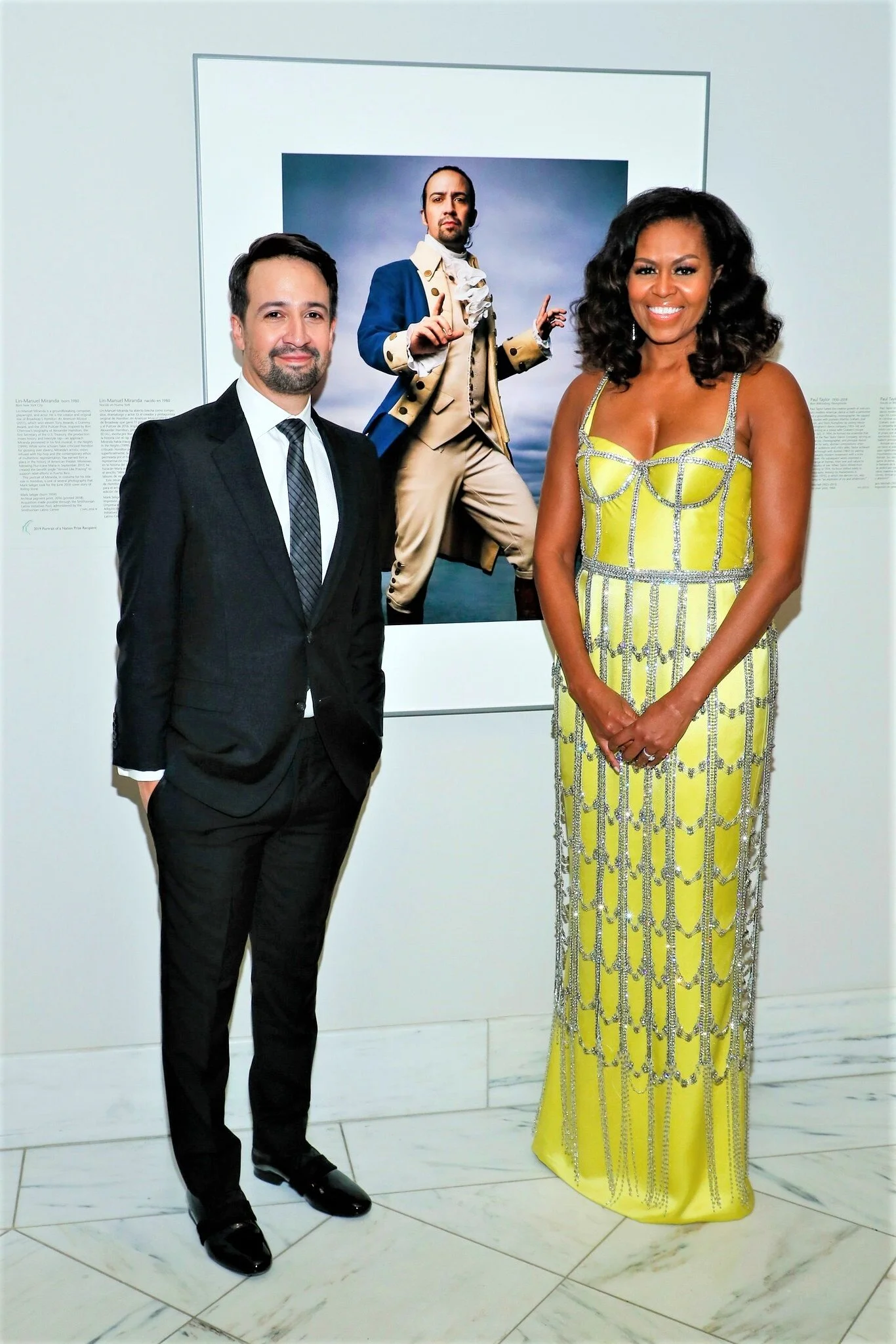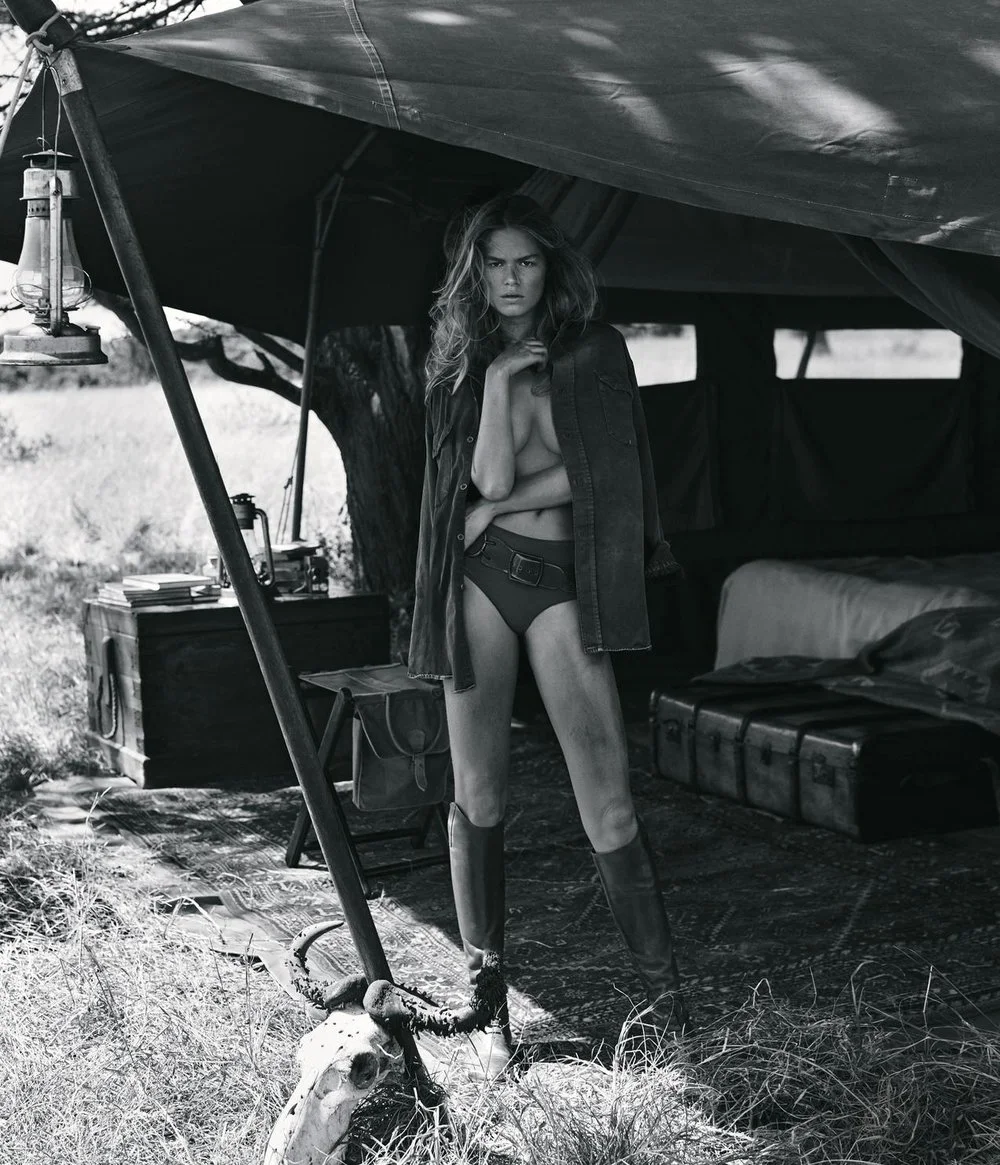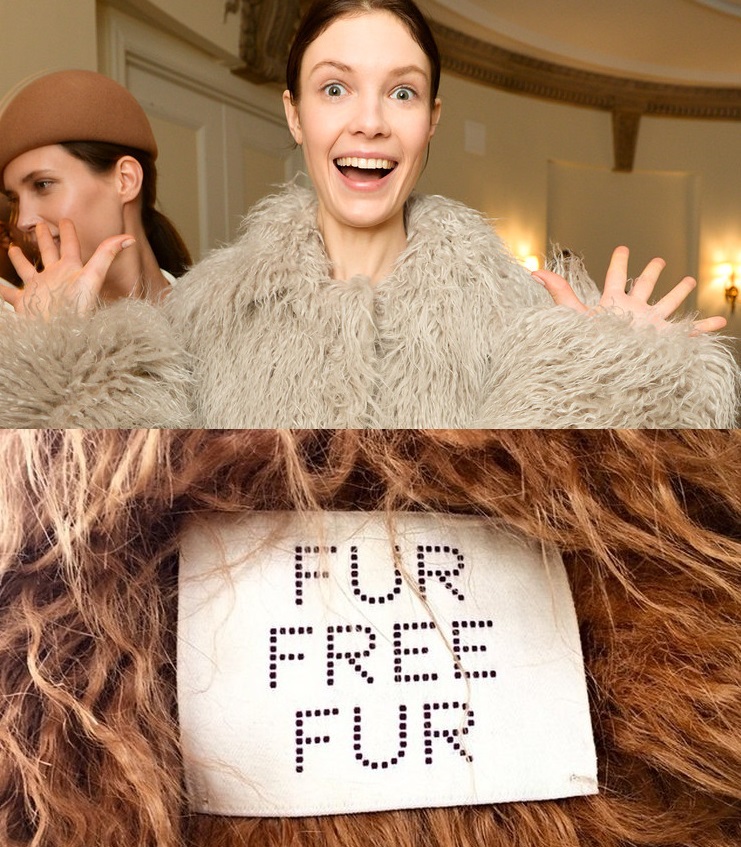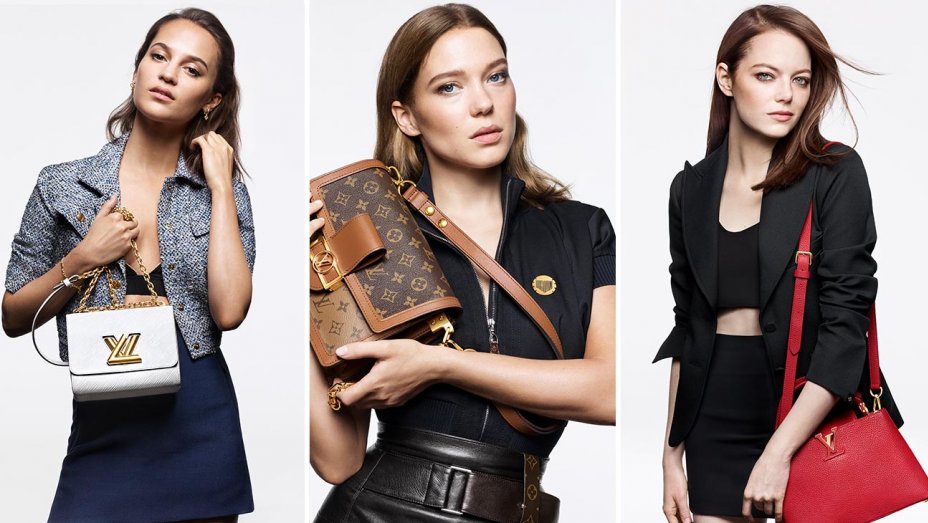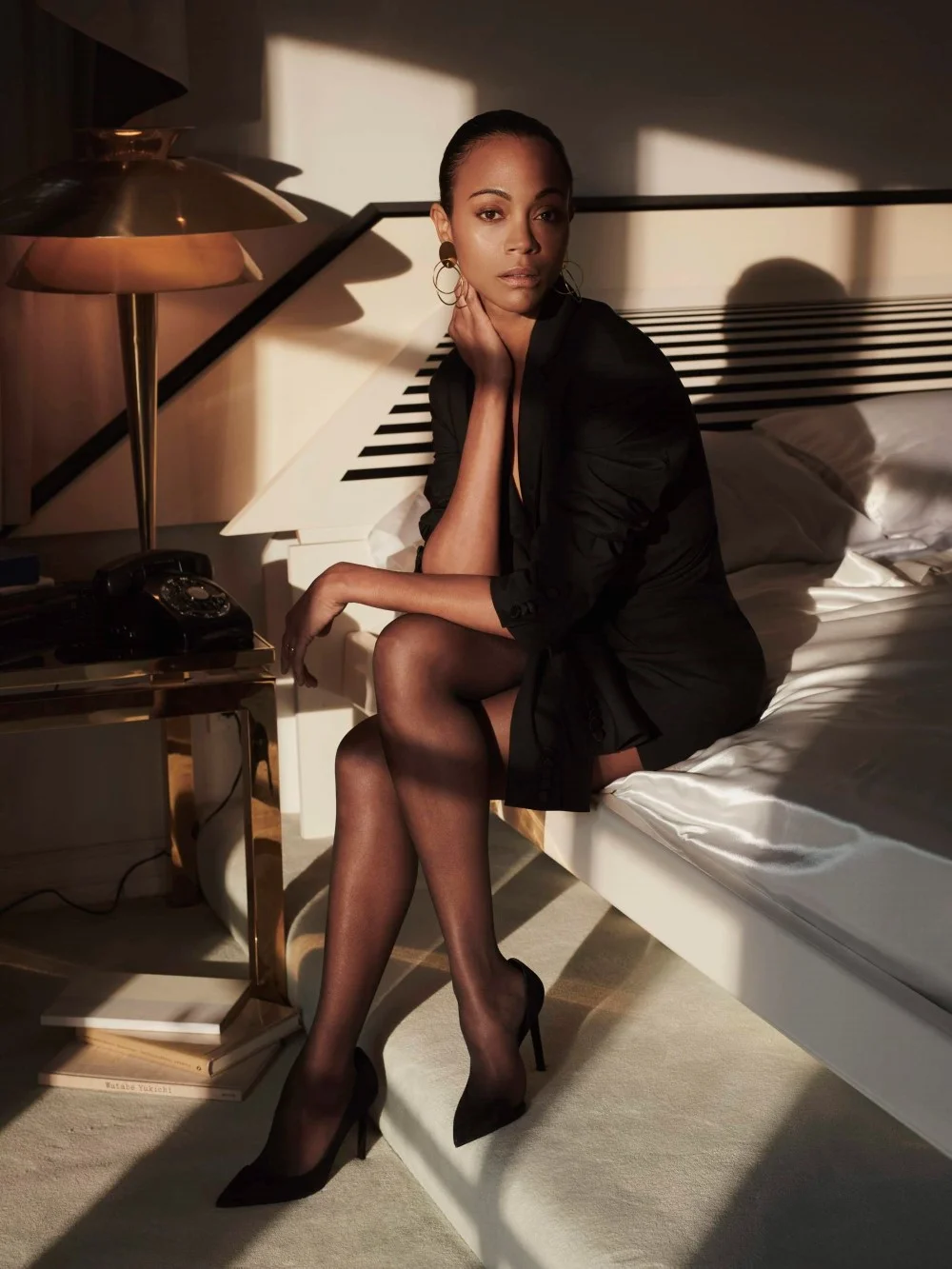Irving Penn | Master Photographer | Sensualist
/Irving Penn is dead but his sensual vision of women flickers on in my mind.
New York Post critic James Gardner wrote that Irving Penn emptied women of their eroticism. I couldn’t disagree more vehemently with him.
Irving Penn was a fashion industry insider capturing global culture’s suppression of women. The fact that Penn was revered for making bold statements about society’s ambilence over female eroticism is the magic of his sorcery.
A series of artists have unlocked my belief that sensuality lies at the core of human existence.
 Penn for Vogue US July 2005, via Flickr’s Ze Call FairyI vividly remember meeting Irving Penn’s photographic vision for the first time. Turning the pages of a seventies Vogue, I saw broken glasses filled with colorful liquors — a red glass of port perhaps, a chartreuse one of pernod … blue, green and pink.
Penn for Vogue US July 2005, via Flickr’s Ze Call FairyI vividly remember meeting Irving Penn’s photographic vision for the first time. Turning the pages of a seventies Vogue, I saw broken glasses filled with colorful liquors — a red glass of port perhaps, a chartreuse one of pernod … blue, green and pink.
The glasses were thrown against the wall, smashing into multi-colored prisms, with liquor everywhere. The colors mixed and morphed into new tones, with shards of glass erupting through the undulating pool of spirits, dripping down the white wall.
Perhaps a Singapore Sling slithered down Penn’s photographic still life canvas in those days. This high voltage photo demanded a boldly female concoction, rather than the damsel-like cosmo concoction that the “Sex and the City” girls drank around Manhattan the past few years.
Women weren’t nearly so “in line” in the seventies as we are today in America. Call it our unruly, breakout period, similar to the 1920s Chanel flapper girls.
We won new rights in back then — whatever this means, given the reality that many people still don’t embrace reproductive freedom for women, and that includes birth control or condoms. American women made an unapologetic case for our rights, and men still loved us.
 via Flickr’s DuotoneDesignWomen were frankly passionate and not swallowing stress-management pills in the pills. Stress was good and somehow women thrived. Irving Penn tapped into that energy and demand for expressed female identity and self-respect. You might say that we were more like French women in those years, and we all know how much of America feels about Grey Poupon.
via Flickr’s DuotoneDesignWomen were frankly passionate and not swallowing stress-management pills in the pills. Stress was good and somehow women thrived. Irving Penn tapped into that energy and demand for expressed female identity and self-respect. You might say that we were more like French women in those years, and we all know how much of America feels about Grey Poupon.
Irving Penn’s shattered glass libations photo was a life metaphor for me: breataking, disruptive beauty, a gorgeous sensual mix of colored spirits coming undone, an inability to contain society’s heady sense of order for women.
Penn’s photo captured women’s sensual existence at the center of the maelstrom.
Mind you, I can make another argument that the shattered glasses of rainbow alcohol represented a refusal among the Greenwich Stepford wives to carry on the charade any longer. Deciding to find identity in the middle of endless money pots, they emptied their library liquor chests in one giant cascade of broken Baccarat, refilled to overflowing in the eighties.
Pick your high-society vision, and if the stiletto fits, wear it. These were the Nancy Sinatra years …
Nancy Sinatra - These Boots are Made for Walking (1966)
For my entire adult life, Penn’s visions interrupted my senses, my intellect and conscience, too. His tidy photos were full of disorder, much like myself.
Penn understood that a restrained or expressed sensuality of life drenches every molecule of human existence. His beliefs took shape in my own life and profesisonal career.
Sensuality is our lifeforce. As Shakira said recently, libido is the engine of the universe.

There are men artists who love women and others who subliminally — and openly — detest us as a subclass of corrupting human beings. I honestly believe that we must stop attributing that mindset to everyone else in the world and look in our own national houses.
You will never convince me that Picasso loved women, for example. In fact, I believe we scared the heck out of him, which is why he was forever chopping us up into little pieces on canvas.
Needing us — and men do need women desperately and most modern men know it — is a form of male weakness. Irving Penn understood this sensual tension, capturing it in shattered glasses of brightly-colored liquor or the blusher powders.
The rods of Sudan and Afghanistan, the recent stoning of a woman for adultery in Somalia, should remind us of civilization’s and religion’s capacity to hate women. It wasn’t so long ago that America’s maternal death rates rivaled those in developing countries.
The women-hating isms of Middle East fundamentalism aren’t so far removed from America’s own religous embivalence about women. We just have a short memory and are experts at taking from religion what we want and trying to forget the rest. Unfortunately, religious doctrine bubbles endlessly in our brains, especially the passages about our being bad girls.
 via Flickr’s ilookatyouwithfeelingsWhat is for certain in thousands of years of human life is that women’s bodies are always under the microscope.
via Flickr’s ilookatyouwithfeelingsWhat is for certain in thousands of years of human life is that women’s bodies are always under the microscope.
Today’s fashion esthetes argue for one version of womanhood — a rigorous beauty identity — but Irving Penn understood the ridiculous, confining nature of that vision. Penn studied women of every size, shape, color, nationality and attitude.
Did Penn the humanist understand the corrosive negation of female identity that continues to lay at the heart of much of the world’s belief systems? The body of his work says “yes” to me, but further research is required.
For sure, Penn was a taskmaster from all I’ve read, a master of perfection, behaving like a Marine drill sergeant for endless hours and insisting that people call him “Mr. Penn”. The reality of his demanding profesional demeanor don’t make the photographer a mysogynist documentor of women’s bodies, the food we eat or powders on our derrieres.
Through his commercial preoccupation with the sensual props of our everyday lives, Penn’s vision captured the psychological tension and contradictions of female. His was a blind alley run into our unconscious minds, where these photos can percolate until we make genuine meaning out of them.
If Penn didn’t intend my psychological analysis of his work, I still believe he’s applauding at my empowering discovery and application of his vision.
Fecund Femaleness
At the risk of being overly simplistic, woman’s sensual identity is about curves, sensuality and disorder. Granted, America has too much of a good thing going on in the roundness department, but in the majority of cases, to be female is to have roundness in one’s body.
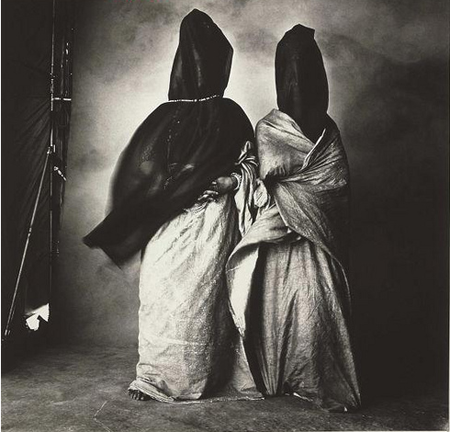 Evolution and Mother Nature have provided women with curves for significant evolutionary reasons.
Evolution and Mother Nature have provided women with curves for significant evolutionary reasons.
Women are more organic and lacking in straight lines. Men understandably wish we would just tidy up when they’re finished with us, but this is not our nature.
Men are linear thinkers, women more circular.
Penn understood and embraced women’s organic, voluptuous essence, our life force that’s typically too profound for male ideology to behold or manage. The photographer walked where angels don’t tread, unless they’re dark angels.
In a week when Ralph Lauren’s womanly muse is tall, rail thin and without curves anywhere on her body, the balanced, holistic vision of Irving Penn shares the big picture of woman’s world, which involves a sensual roundness, whether the subject is cheese or the ample backside of Kate Moss.
Is a man who embraces curves less tyrannical in his view of women?
Feeling a need to stop attributing this ongoing historical debate about women’s physicality, the shapes of our bodies and our morality to “the times we live in”, I will bottom line my point of view saying: if the imagery and icons of a society are essentially linear, that society is ambivalent about female sensuality.
My view of fashion is that trying to remake women’s bodies into boys bodies is misogynistic, and I don’t care who is in charge of the fashion shoot or design department. My comment about boy bodies doesn’t apply to women in trousers, if you believe that the Bible’s demand that women not wear what belongs to men to be a prohibition against wearing pants.
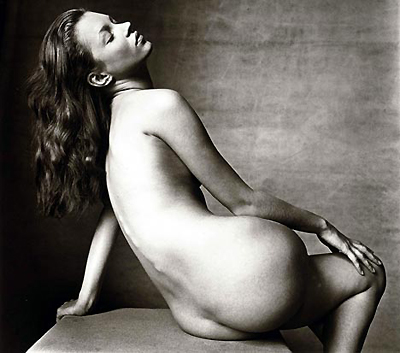 Unspoilt: An innocent, unspoilt Kate Moss in a 1996 photographic portrait by Irving Penn Read more: http://www.dailymail.co.uk/tvshowbiz/article-529508/Nude-photos-Gisele-Bundchen-Kate-Moss-hammer.html#ixzz0TMlz7q83To be clear, Irving Penn loved thin women, too.
Unspoilt: An innocent, unspoilt Kate Moss in a 1996 photographic portrait by Irving Penn Read more: http://www.dailymail.co.uk/tvshowbiz/article-529508/Nude-photos-Gisele-Bundchen-Kate-Moss-hammer.html#ixzz0TMlz7q83To be clear, Irving Penn loved thin women, too.
Vince Aletti, photo critic and adjunct curator of the International Center of Photography said of Irving Penn: “He had a great vision and clearly loved his subjects. His shots were very reserved, spare, precise.” via Salon
If the photos were spare and precise, his subjects were not. Looking at some of Penn’s most provocative photographic life statements, I believe that perfection bored him silly.
Penn’s photos allude to the disruptive nature of women’s existence — the unplanned pregnancies, the premature grey hair, the nastiness of cigarettes that keep women thin and on a deadly course of self-destruction but were required and promoted (still are) as an elixir against natural roundness.
Perhaps no artist/photographer gives us a more profound psychological documentary on American society and the lifestyles of our women, against the global backdrop of women’s original sensual origins as Irving Penn.
 Mouth for L’Oreal ‘B’, New York, 1986 by Irving PennNot much is written about Irving Penn’s political visual commentary on society’s need to expunge female eroticism, but I see a uniquely political statement staring us in the face. When I look at this L’Oreal lipstick photo, I see female temptation, not only the shades of the season. Surely it’s in man’s best interests that this woman not be allowed out of the house without a male chaperone.
Mouth for L’Oreal ‘B’, New York, 1986 by Irving PennNot much is written about Irving Penn’s political visual commentary on society’s need to expunge female eroticism, but I see a uniquely political statement staring us in the face. When I look at this L’Oreal lipstick photo, I see female temptation, not only the shades of the season. Surely it’s in man’s best interests that this woman not be allowed out of the house without a male chaperone.
In marrying commercialism and art, Penn made loud statements to women about the patriarchal nature of the fashion industry and society in general. It doesn’t matter whether Karl Lagerfeld or Anna Wintour is speaking.
I was reading last night about the extensive collaboration of women in honour killings. Women are deeply woven into the degration and disgrace of other women around the world. We blame men for these nonsensical 21st century murders but women are high-level collaborators.
On the subject of mother-in-laws who help set a young woman on fire because her housekeeping was inferior, it’s true that women in India can’t overturn the cultural system — not yet, anyway.
With fashionistas, the inflicted pain is another set of customs: the need to define one’s worth not by the pursuit of excellence and self-development, but the easier route, which is to mock someone else as inferior and jealous of your glorious life.
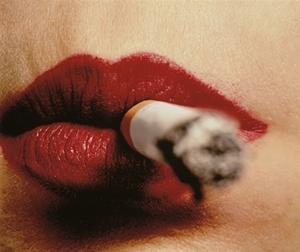 Mr. Penn understood the patriarchal, aristocratic tensions of the fashion world very well.
Mr. Penn understood the patriarchal, aristocratic tensions of the fashion world very well.
This beauty and body image hierarchy has existed for thousands of years, although some parts of the world — Europe in particular — are making headway in adopting a new set of cultural values that run deep in the fabric of their societies.
Much has been written about the desire of people to rise to the high-priestess rung of inclusion in America’s “in” groups.
It’s true that most of us are hamsters in the cage, trying to lead another mouse’s life. Yet, there’s a certain smugness in the lack of self-critique by image-driven women, who define themselves by the mounds of jealousy we little people have for them.
I can’t imagine what it feels to look in the mirror, telling oneself that hundreds, perhaps thousands, of people want to look like you, so much so that they carry photos of you to the doctor, asking him/her to make you over in her image.
The smart woman channels that power in altruistic ways. Stupid women drown in their own self-absorption, never leveraging society’s idolatry of them for good use.
The latter strategy is the real power of Angelina Jolie and Shakira. Madonna is late to this philanthropy party but now on board our new international women’s rights engine. To be fair to Madonna, who I embrace thoroughly, she’s fault the all-important fire of liberating women’s sensuality for decades. Women have multiple missions in today’s world.
Irving Penn understood these truths about human societies and the evolution of civilizations. The tyranny of fashion dictates a new set of rules for women decade by decade, but it dictates nevertheless.
Perhaps most women always need a rod of some kind, to keep them in line. This is the benevolent view of modern religion’s good guys.
Commercially speaking, we ladies can’t reach a rung of self-acceptance because we just might stop shopping so much, spending money we don’t have, and weeping that we will never be a size 4. Business has a huge interest in our self-loathing, although the French don’t manage to trample all over a woman’s self-identity, Karl Lagerfeld aside.
French women love fashion, style, beauty and joie de vivre …and they love their quirky, sensual selves even more. French women have less need for comfort food to make them plump, because they see a different woman in the mirror.
 ‘Bare Necessities” by Irving Penn, for a feature on mud in beauty products. US Vogue, 2004My takeaway on Irving Penn is that he was forever smudging up the social landscape, capturing society’s assult on female nature.
‘Bare Necessities” by Irving Penn, for a feature on mud in beauty products. US Vogue, 2004My takeaway on Irving Penn is that he was forever smudging up the social landscape, capturing society’s assult on female nature.
A brilliant trickster, Penn’s techniques are so sophisticated in making very feminist statements, that we don’t feel slapped hard at all. We’re so sure that Penn adores the status quo that we can’t possibly think of him as being subversive.
On the shape of women’s bodies, Irving Penn was his most provocative self.
If the first personal Penn moment in my life was seeing the liquored up, broken glass photos in their sensual magnificence, my most profound moment was seeing Irving Penn’s Metropolitan Museum show “Earthy Bodies”.
 Irving Penn, from “Earthly Bodies” exhibit New York’s Metropolitan MuseumViewing “Earthy Bodies” unleashed a chain of events in my life that continue to this day. You could say that my personal philosophy about the tyranny of beauty, morality and physicality enveloped me that afternoon at the Met, unleashing a profound for me sequence of inner exploration of myself and female identity.
Irving Penn, from “Earthly Bodies” exhibit New York’s Metropolitan MuseumViewing “Earthy Bodies” unleashed a chain of events in my life that continue to this day. You could say that my personal philosophy about the tyranny of beauty, morality and physicality enveloped me that afternoon at the Met, unleashing a profound for me sequence of inner exploration of myself and female identity.
In forcing me to confront my own physicality, Irving Penn liberated me for good, and I will always love him for his gift. Today when I slip up on self-identity issues, I call up Irving Penn for a crash course on women’s identity.
If Ubah Hassan is Ralph Lauren’s new muse, Irving Penn and his photos are my old one in a richly layered conversation of what it means to be female in the world, but especially in America.
I’ve skirted around this phase of my life for 30 months of this journal, sharing bits and pieces about my self-confrontation but never actually laying out the entirety of seeing Irving Penn’s “Earthy Bodies” exhibit and what happened next. I will do so shortly. Anne


